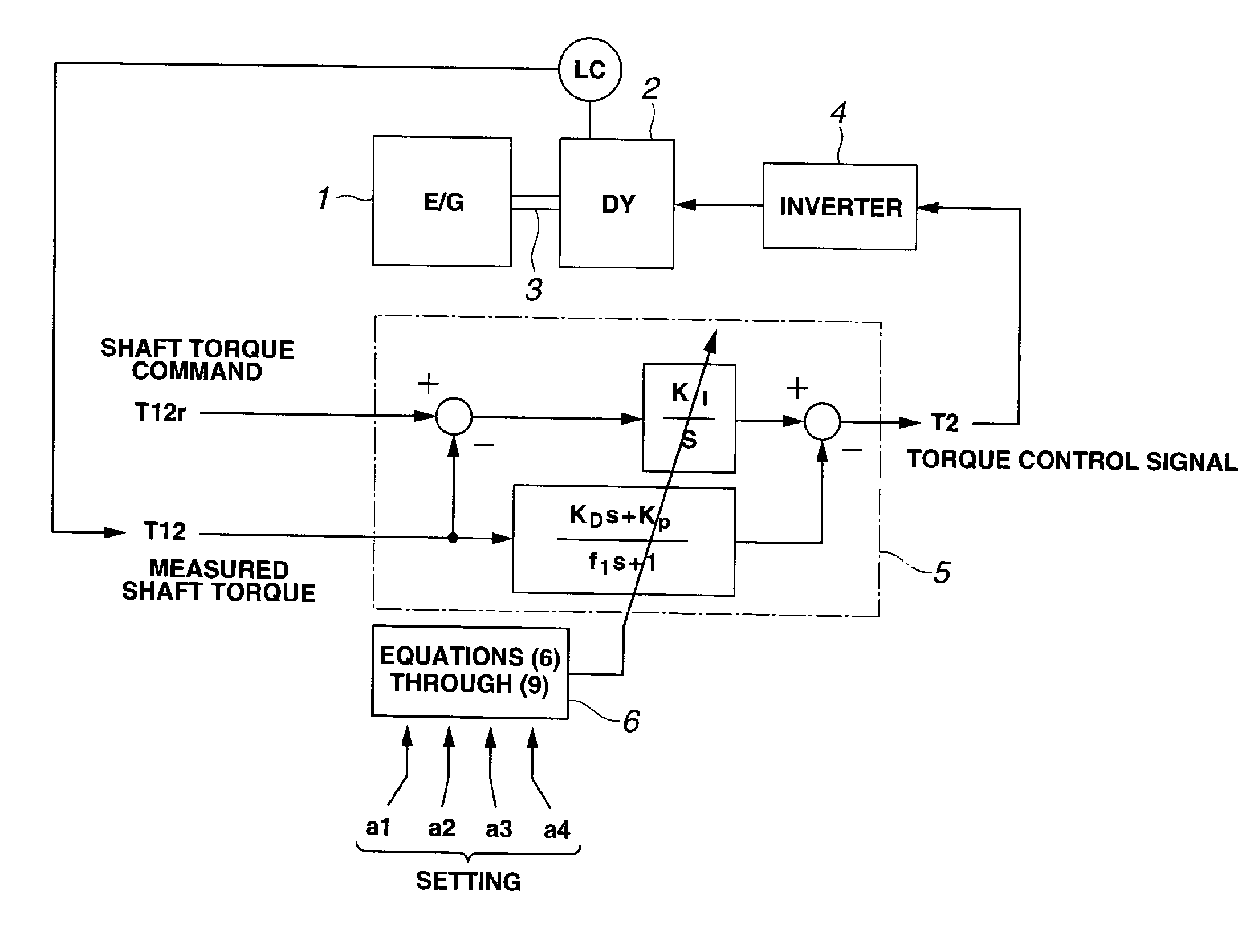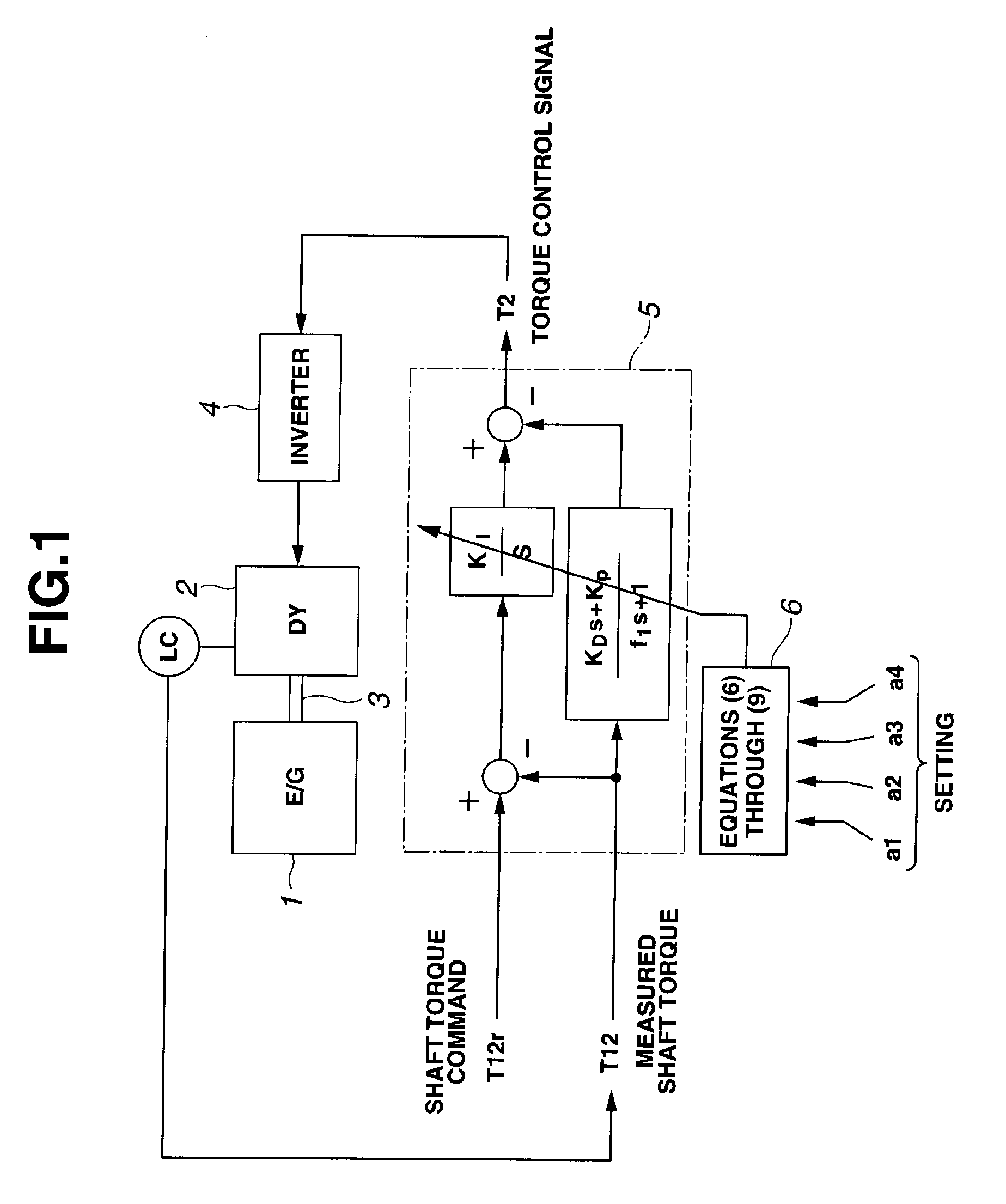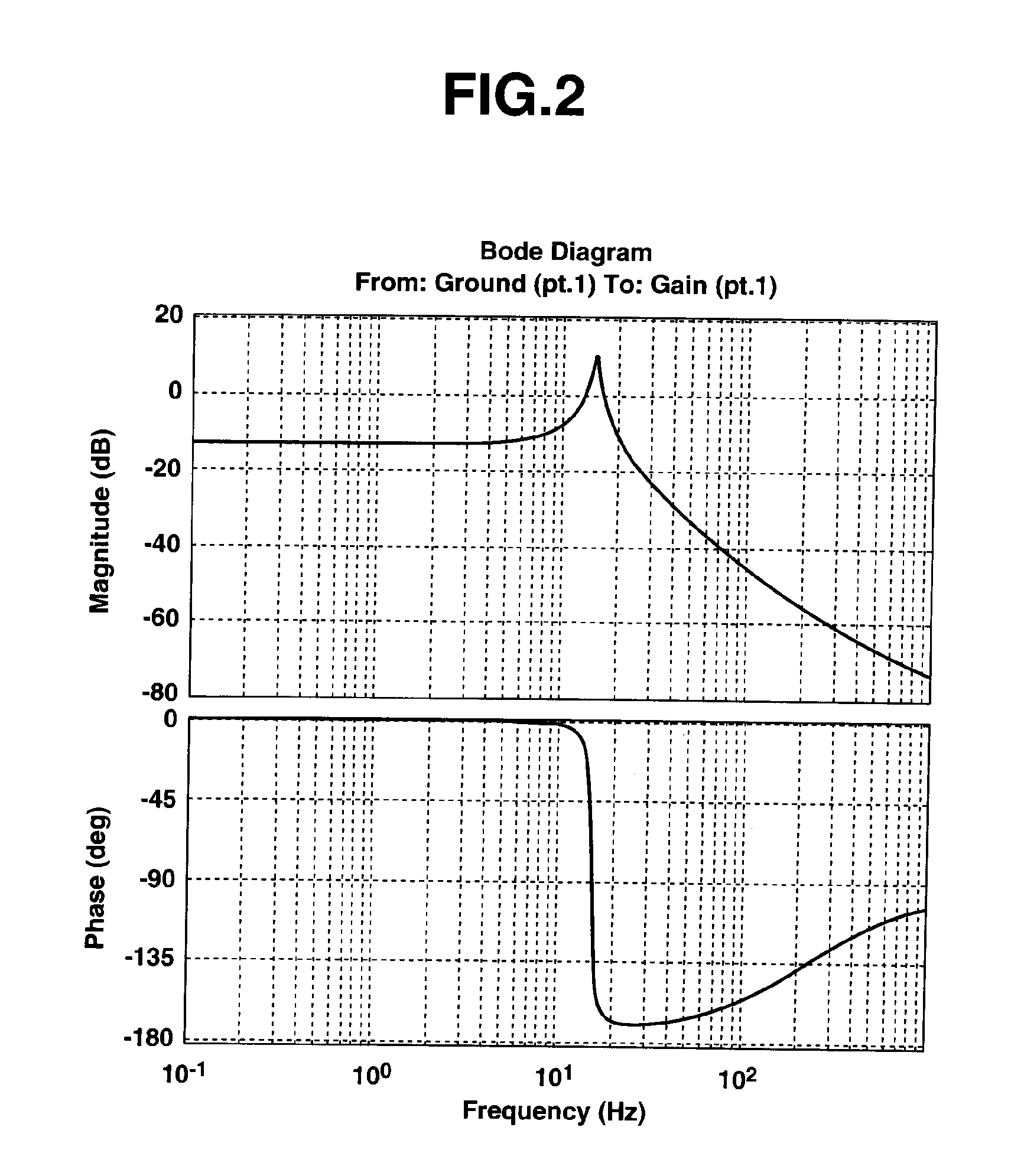Engine bench system control system
a control system and engine technology, applied in the direction of engine testing, structural/machine measurement, instruments, etc., can solve the problems of difficult to achieve a stable torque control based on the p design method, and the determination of a weight function requires trial and error
- Summary
- Abstract
- Description
- Claims
- Application Information
AI Technical Summary
Benefits of technology
Problems solved by technology
Method used
Image
Examples
embodiment 1
[0044]FIG. 1 shows a control circuit of a major part of a dynamometer in an engine bench system according to the present embodiment. In a system configuration where an engine 1 is coupled to a dynamometer 2 via a shaft 3, and an inverter 4 controls an output of engine 1 and a torque of dynamometer 2, a controller 5 generates a torque control signal T2 for dynamometer 2 by calculation based on a shaft torque command T12r and a measured shaft torque T12 with a transfer function of the above equation (4).
[0045]Control parameters (KI, KP, KD, f1) in controller 5 are determined by calculation according to the above equations (6) through (9) on a basis of control characteristic parameters (a4, a3, a2, a1) set in a function calculation section 6 and estimated controlled object parameters (J1, K12, J2).
[0046]In this embodiment, the coefficients (KI, KP, KD, f1) of equation (4) are determined as follows.
[0047]Control characteristic parameters (a4, a3, a2, a1) are prepared by a parameter sett...
embodiment 2
[0054]FIG. 5 shows a control circuit of a major part of a dynamometer according to the present embodiment, in which the mechanical system is omitted. In this embodiment, a parameter calculation section 7 is provided which determines parameters of (KI, KP, KD, f1) in equation (4) as described below.
[0055]Parameter calculation section 7 sets control characteristic parameters (a4, a3, a2, a1) to coefficients of a product of a characteristic polynomial of a two-inertia mechanical system having a resonance characteristic and a characteristic polynomial of a second-order low-pass filter. Specifically, the control characteristic parameters are set as follows.
[0056]When a resonance frequency and a damping coefficient of a two-inertia mechanical system having a desired resonance characteristic are represented by ωn, and z, respectively, its characteristic polynomial is (s / ωn)2+2×z×(s / ωn)+1. In addition, the characteristic polynomial of the second-order low pass filter is assumed as c2×s2+c1×...
embodiment 3
[0060]FIG. 7 shows a control circuit block diagram of a major part of a dynamometer according to the present embodiment, in which the mechanical system is omitted. In this embodiment, a parameter calculation section 8 is provided to determine control parameters of (KI, KP, KD, f1) in equation (4) as follows.
[0061]Parameter calculation section 8 sets control characteristic parameters (a4, a3, a2, a1) to coefficients of a product of the characteristic polynomial of a two-inertia system having a resonance characteristic A and the characteristic polynomial of a two-inertia system having a resonance characteristic B.
[0062]Specifically, control characteristics are set as follows. When the resonance characteristic A is represented by a resonance frequency ωn1 [rad / a], and a damping coefficient z1, and the resonance characteristic B is represented by a resonance frequency of ωn2 [rad / a], and a damping coefficient z2, the product of these characteristic polynomials is ((s / ωn1)2+2×z1×(s / ωn1)+...
PUM
 Login to View More
Login to View More Abstract
Description
Claims
Application Information
 Login to View More
Login to View More - R&D
- Intellectual Property
- Life Sciences
- Materials
- Tech Scout
- Unparalleled Data Quality
- Higher Quality Content
- 60% Fewer Hallucinations
Browse by: Latest US Patents, China's latest patents, Technical Efficacy Thesaurus, Application Domain, Technology Topic, Popular Technical Reports.
© 2025 PatSnap. All rights reserved.Legal|Privacy policy|Modern Slavery Act Transparency Statement|Sitemap|About US| Contact US: help@patsnap.com



